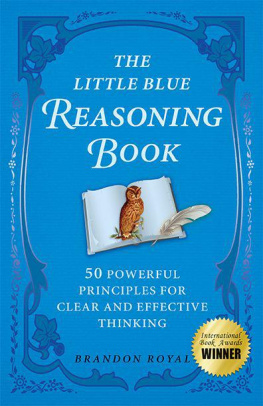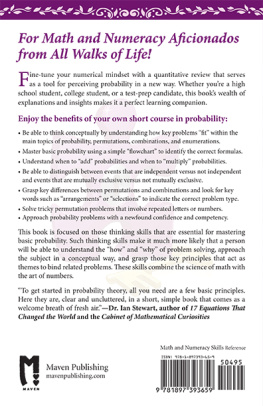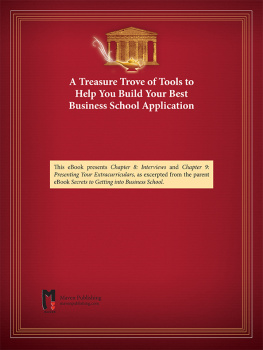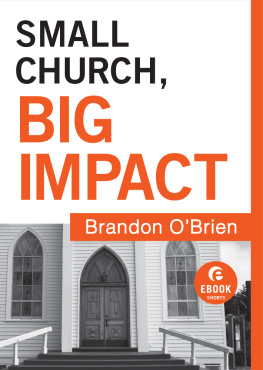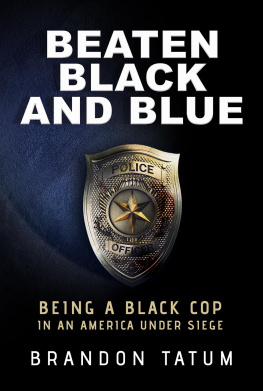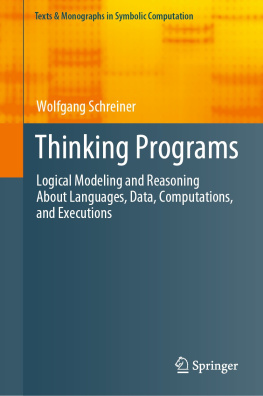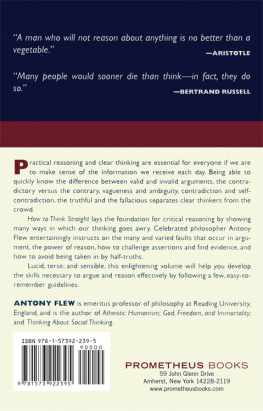Brandon Royal - The Little Blue Reasoning Book: 50 Powerful Principles for Clear and Effective Thinking
Here you can read online Brandon Royal - The Little Blue Reasoning Book: 50 Powerful Principles for Clear and Effective Thinking full text of the book (entire story) in english for free. Download pdf and epub, get meaning, cover and reviews about this ebook. year: 2010, publisher: Maven Publishing, genre: Politics. Description of the work, (preface) as well as reviews are available. Best literature library LitArk.com created for fans of good reading and offers a wide selection of genres:
Romance novel
Science fiction
Adventure
Detective
Science
History
Home and family
Prose
Art
Politics
Computer
Non-fiction
Religion
Business
Children
Humor
Choose a favorite category and find really read worthwhile books. Enjoy immersion in the world of imagination, feel the emotions of the characters or learn something new for yourself, make an fascinating discovery.
- Book:The Little Blue Reasoning Book: 50 Powerful Principles for Clear and Effective Thinking
- Author:
- Publisher:Maven Publishing
- Genre:
- Year:2010
- Rating:4 / 5
- Favourites:Add to favourites
- Your mark:
- 80
- 1
- 2
- 3
- 4
- 5
The Little Blue Reasoning Book: 50 Powerful Principles for Clear and Effective Thinking: summary, description and annotation
We offer to read an annotation, description, summary or preface (depends on what the author of the book "The Little Blue Reasoning Book: 50 Powerful Principles for Clear and Effective Thinking" wrote himself). If you haven't found the necessary information about the book — write in the comments, we will try to find it.
Brandon Royal: author's other books
Who wrote The Little Blue Reasoning Book: 50 Powerful Principles for Clear and Effective Thinking? Find out the surname, the name of the author of the book and a list of all author's works by series.
The Little Blue Reasoning Book: 50 Powerful Principles for Clear and Effective Thinking — read online for free the complete book (whole text) full work
Below is the text of the book, divided by pages. System saving the place of the last page read, allows you to conveniently read the book "The Little Blue Reasoning Book: 50 Powerful Principles for Clear and Effective Thinking" online for free, without having to search again every time where you left off. Put a bookmark, and you can go to the page where you finished reading at any time.
Font size:
Interval:
Bookmark:

THE
LITTLE BLUE
REASONING BOOK
50 Powerful Principles
for Clear and Effective
Thinking
Brandon Royal
Published by Maven Publishing

2010 by Brandon Royal
All rights reserved. No part of this work may be reproduced or transmitted in any form or by any means, electronic or mechanical including photocopying, recording, or any information storage and retrieval system without permission in writing from the author or publisher.
Reviewers, however, may quote brief passages in a review, and individuals wanting to reference material from this book for academic or non-commercial purposes may do so provided the book, with title and authors name, is cited as a source.
Published by:
Maven Publishing
4520 Manilla Road
Calgary, Alberta, CanadaT2G 4B7
www.mavenpublishing.com
Correspondence Address in Asia:
GPO Box 440
Central, Hong Kong
Library and Archives Canada Cataloguing in Publication:
Royal, Brandon
The little blue reasoning book : 50 powerful principles of clear and effective thinking / by Brandon Royal.
ISBN 978-1-897393-62-8 (eBook)
Library of Congress Control Number: 2009909356 (paperback)
In addition to this eBook edition, this book is available in paperback and in the Adobe PDF file format.
Technical Credits:
Cover Design: George Foster, Fairfield, Iowa, USA
Editing: Jonathan K. Cohen, Irvine, California, USA
Illustrations: Ashley Vercekaites, Calgary, Canada
This books cover text was set in Minion. The interior text of the paperback edition was set in Scala and Scala Sans.
Contents
Preface
Introduction
Quiz
Selective Perception
The Magic of Coincidence
The Four Classic Mindsets
Overview
Lateral Thinking
Divergent vs. Convergent Thinking
Mind Maps
Devils Advocate Technique
Idea Killers and Idea Growers
Brainstorming
Reframing Problems
Selling Creative Ideas
Overview
Pros-and-Cons Analysis
Matrixes
Decision-Event Trees
Probability Trees
Weighted Ranking
Utility Analysis
Sunk Costs
Hypothesis Testing
Prisoners Dilemma
Overview
The ABCs of Argument Structure
Evaluating Arguments
The Five Common Reasoning Flaws
Testing Critical Reasoning
Putting It All Together
Overview
If Then Statements
No-Some-Most-All Statements
Mutual Inclusivity and Exclusively
Statements of Logical Equivalency
Testing Logic-based Reasoning
Quiz Answers
Selected Bibliography
About the Author
Preface
Henry Humidor purchased a box of very rare, very expensive cigars and insured them, among other things, against fire. Within a month, having smoked his entire stockpile of cigars, he filed a claim against the insurance company. In his claim, Henry stated the cigars were lost in a series of small fires. The insurance company refused to pay, citing the obvious reason: he had consumed the cigars in the normal fashion.
Henry sued and won!
In delivering the ruling, the judge agreed that the claim was frivolous. He stated that the man nevertheless held a policy from the company in which it had warranted that the cigars were insurable and also guaranteed that it would insure against fire, without adequately defining what is considered to be an unacceptable fire, and was obligated to pay the claim.
Rather than endure a lengthy and costly appeals process, the insurance company accepted the ruling and paid Henry $15,000 for the rare cigars he lost in the fires.
But
After Henry cashed the check, the insurance company had him arrested on twenty-four counts of arson! With his own insurance claim and testimony from the previous case used against him, Henry Humidor was convicted of intentionally setting fire to his insured property and was sentenced to twenty-four months in jail and a $24,000 fine.
Welcome to the wonderful world of reasoning.
Introduction
Some 2,500 years ago, Socrates gave birth to the art and science of what we now call critical reasoning. Through a system of inquiry, known as the Socratic method, Socrates used a series of probing questions to obtain answers and then critique those answers. In this manner, he sought to reveal the key issues behind perplexing problems, to uncover the merit and flaws in commonly held ideas, and to expose those contradictory beliefs that often hide behind smooth-sounding but empty rhetoric. It is indeed humorous to reflect on Socrates observation that one cannot necessarily rely on the sound judgment of those individuals occupying positions of authority; they may be prone to think in a muddled, whimsical, or irrational manner.
Critical reasoning, also referred to as critical thinking, may be defined broadly as the process by which we evaluate information. Often, the information we seek relates to problems or opportunities, and the process relates to how we arrive at our conclusions based upon the information we have. Individuals who possess critical thinking skills can identify problems or opportunities, gather relevant information, analyze information in a proper way, and come to reliable conclusions by themselves, without necessarily relying on others.
Notwithstanding our ability to read, no other single skill is more important than our ability to reason. Yet, strangely, no required course dedicated to reasoning skills exists as a part of our regular school curriculum or as part of any on-the-job training program. This book provides a distillation of the most useful academic and real-life reasoning concepts. Teaching in our school systemsprimary, secondary, and post-secondaryhas traditionally been skewed toward instructing us what to think as opposed to how to think. An all-rounded education must balance the teaching of course content with new and better ways of understanding and interpreting the material at hand.
This book contains fifty reasoning tips interspersed throughout five sections. Perception & Mindset (chapter 1) provides an initial framework for reasoning. We live in a world of imperfect information and of imperfect abilities, where subjectivity is a key ingredient. As no two individuals have the same perspective or mindset, we must makes allowances for this when mastering the tools of reasoning and logic.
Creative Thinking (chapter 2) introduces non-traditional thinking methods. Creative thinking is subjective or non-linear thinking, and is often referred to as out-of-the-box thinking. One of the most useful topics is reframing problems. An important step in problem solving involves asking, Is the perceived problem really the problem? The ability to use creativity to better define problems bolsters the ability to solve problems.
Decision Making (chapter 3) focuses on applied reasoning and introduces various tools, the major benefit of which is to structure or quantify the decision-making process. The basic toolsboxes and treesare devices that allow problems to be approached in an efficient, organized manner. Other tools, such as weighted ranking and utility analysis, allow us to quantify qualitative decisions (e.g., hiring decisions, career choices), which may or may not involve monetary considerations.
Analyzing Arguments (chapter 4) shows us how to break arguments down according to classic argument structure: conclusion, evidence, and assumption. The ability to understand, attack, and defend arguments is one of the most fundamental uses of reasoning skills. Mastering Logic (chapter 5) contains some of the more technical material in this book, but it also provides the foundation for understanding some of the most relevant examples of reasoning flaws found in everyday conversation and speech.
Font size:
Interval:
Bookmark:
Similar books «The Little Blue Reasoning Book: 50 Powerful Principles for Clear and Effective Thinking»
Look at similar books to The Little Blue Reasoning Book: 50 Powerful Principles for Clear and Effective Thinking. We have selected literature similar in name and meaning in the hope of providing readers with more options to find new, interesting, not yet read works.
Discussion, reviews of the book The Little Blue Reasoning Book: 50 Powerful Principles for Clear and Effective Thinking and just readers' own opinions. Leave your comments, write what you think about the work, its meaning or the main characters. Specify what exactly you liked and what you didn't like, and why you think so.

